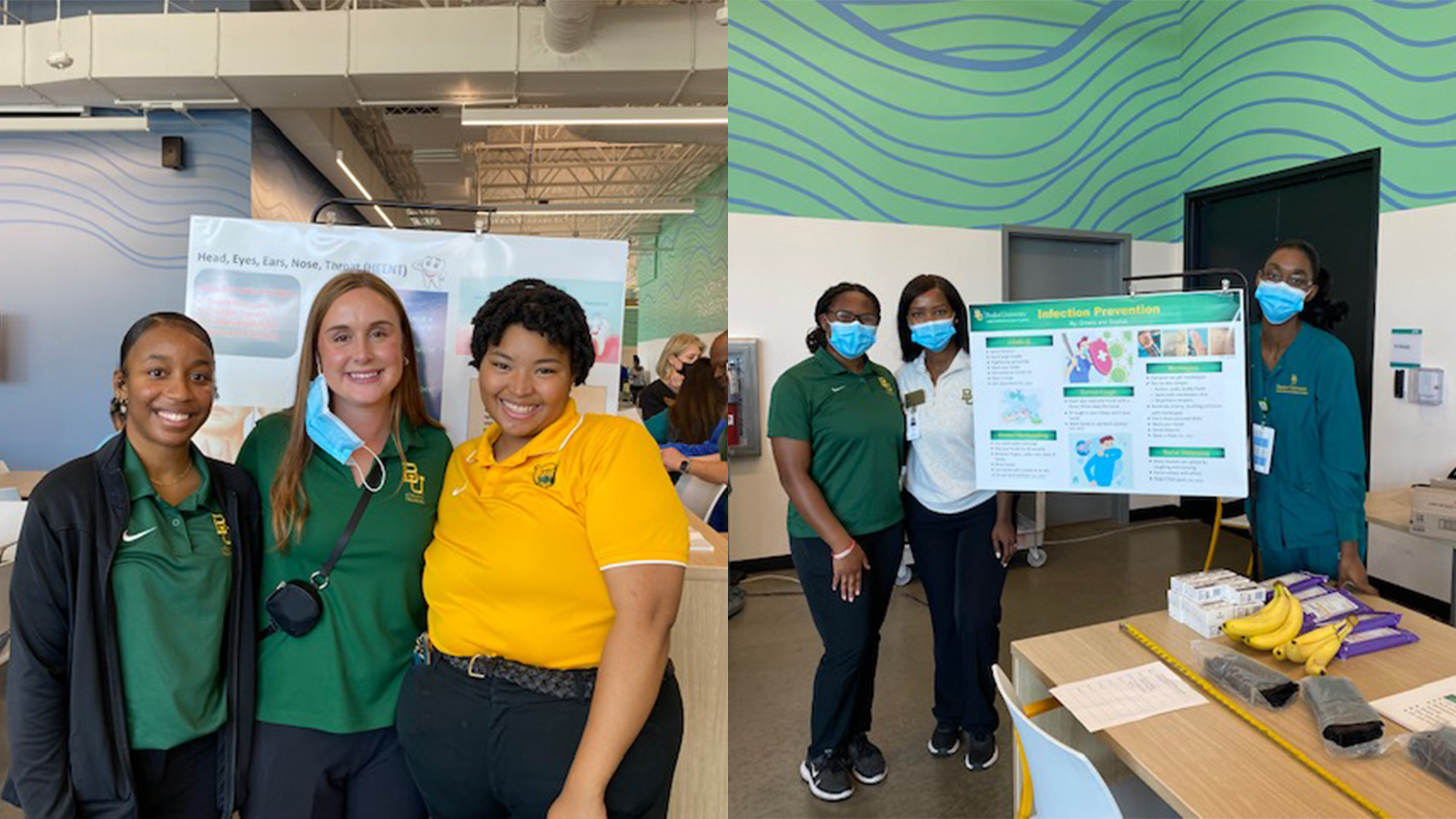Master of Athletic Training Students Collaborate with Nursing School for Austin Street Health Fair

This September, Baylor Master of Athletic Training (MAT) students collaborated with the Louise Herrington School of Nursing at a health fair for the residents of Austin Street, one of the largest homeless shelters in Dallas. This experience was part of the Robbins College Interprofessional Education initiative designed to help students develop collaboration skills and better serve patients across a variety of health fields. During the Austin Street Health Fair, MAT and nursing students provided health checks and education to residents. Second-year MAT students Kharis McFarland and Jacob Garvin share their perspectives and takeaways from the experience.
Kharis and Jacob both majored in Health Sciences Studies in the Department of Health, Human Performance, and Recreation in the five-year accelerated MAT program, which includes three years of undergrad study followed by a two-year master’s degree. Kharis has had a growing interest in sports medicine since the beginning of high school and would like to work in collegiate or high school volleyball. She attended the Austin Street Health Fair as part of a class on interprofessional collaboration taught by Dr. Heather Hudson, Associate Clinical Professor and Chair of the Robbins College Interprofessional Education Committee. The class brainstormed topics to present at the health fair, including fall risks and wound care, and created materials to hand out. At the fair, MAT students were placed in groups with nursing students. Kharis was initially placed as a floater between groups, then moved to the spiritual health table, where she talked with residents about religion and stress relief topics to “help the residents find some sense of hope regardless of their situation.”
“I definitely walked out of my experience at the Austin Street Center better as a clinician,” she says, noting that sitting and talking with patients improved her communication, listening, and rapport-building skills. “I will definitely take my experiences and apply them to my practice for a long time after graduation.”
Jacob chose to study athletic training because of his interest in the science aspect of sports, specifically basketball, which he played growing up and throughout high school. He wants to become a strength and conditioning coach for high-level basketball after graduating. At Austin Street, he worked at the diabetes screening station examining people’s feet for signs of diabetes, and then clipping their toenails and massaging their feet. The collaboration with nursing students was especially beneficial at this station because their experience with chronic disease helped identify certain signs of concern.
For Jacob, the health fair affirmed the importance of “seeing the homeless population as fellow human beings and neighbors in the community.” Of his conversations with residents, who were often open about their backgrounds and struggles with addiction and mental illness, he says, “It put it in my mind that anyone could end up here.”
Although he will probably be working with a different patient population in his career, he feels that the perspective he gained from Austin Street would be valuable for anyone. “Going into my career, it taught me to talk to people as individuals and get to know where they come from before making a judgment on their character or work ethic,” he says.
Both Kharis and Jacob say that future collaborations like this would be beneficial to all departments of the Robbins College of Health and Human Sciences. “It’s a good health care experience,” Jacob says, “but also a good human experience.”